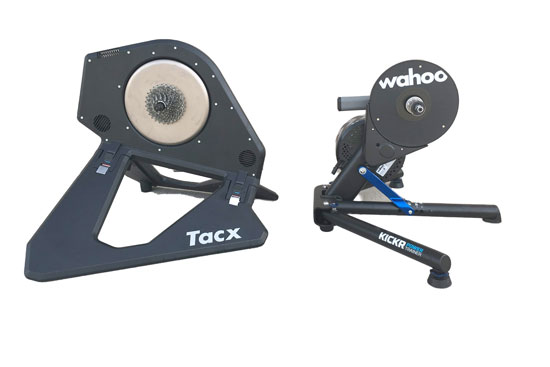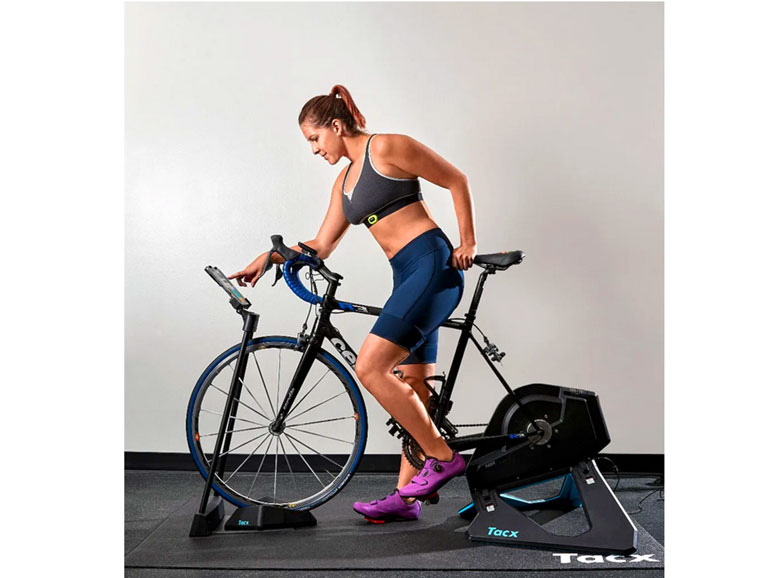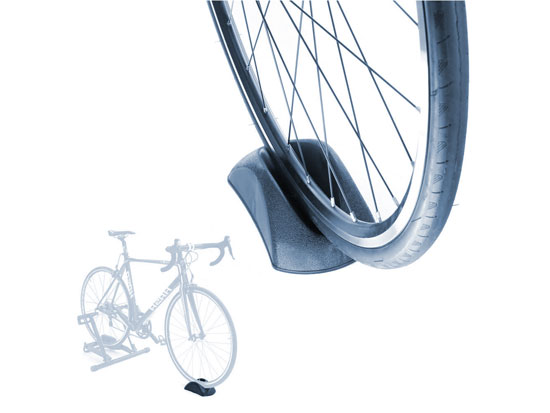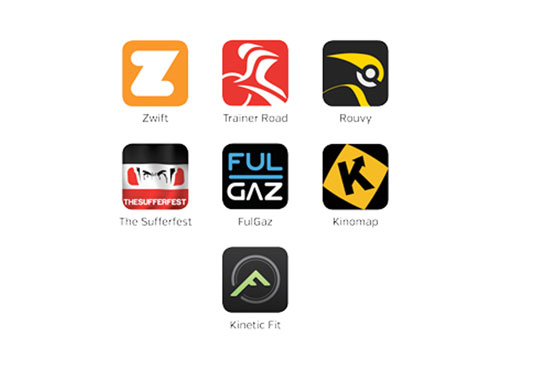Smart Bike Trainer
In today’s digital age, smart bike trainers have revolutionized indoor cycling, taking training and fitness to a whole new level.
With their advanced technology and interactive features, these trainers offer an immersive and engaging experience that goes beyond traditional stationary bikes.
In this comprehensive guide, we delve into the world of smart bike trainers, exploring their benefits, features, compatibility, and how they can elevate your indoor cycling routine.
Whether you’re a seasoned cyclist or just starting your fitness journey, get ready to discover the incredible potential of smart bike trainers.
What Is a Smart Indoor Bike Trainer?
Smart bike trainers are advanced indoor cycling devices that incorporate technology to enhance the training experience.
Unlike traditional stationary bikes or basic trainers, smart trainers are designed to provide a more interactive and immersive workout environment.
At their core, smart bike trainers feature built-in sensors and connectivity options such as ANT+ and Bluetooth, allowing them to measure various metrics including power output, cadence, speed, distance, and more.
These trainers can transmit this data in real-time to compatible devices such as smartphones, tablets, or computers, enabling cyclists to track their performance and progress.
What sets smart bike trainers apart is their ability to interact with virtual cycling platforms or training apps.
These platforms offer a wide range of features, including virtual routes, structured training programs, and virtual races.
Smart trainers can simulate the resistance and terrain changes of these virtual routes, creating a more engaging and realistic cycling experience.
With smart trainers, cyclists can not only monitor their metrics but also participate in virtual group rides, compete against other riders, or challenge themselves with customized workouts.
Some trainers even offer coaching features and personalized training plans to help users achieve their fitness goals.
The integration of technology and connectivity in smart bike trainers opens up a world of possibilities for indoor cycling enthusiasts.
It brings the outdoor riding experience indoors, allowing cyclists to train effectively, stay motivated, and track their progress with precision.
Whether you’re a beginner or an experienced cyclist, a smart bike trainer can revolutionize your indoor training routine and take your fitness to new heights.
What Are the Different Types of Smart Indoor Bike Trainers?
OK, so there are several types of smart trainers available on the market. Here are brief descriptions of the most common types:
Direct-Drive Smart Trainer
This type of trainer requires you to remove the rear wheel of your bike and attach the bike directly to the trainer.
It typically includes a cassette or freehub where you mount your bike’s chain.
Direct-drive trainers offer a more realistic and immersive riding experience, as they provide accurate power measurement and simulate gradient changes by adjusting resistance.
Wheel-On Smart Trainer
With a wheel-on smart trainer, you keep your bike’s rear wheel on and place it in contact with the trainer’s roller. The roller applies resistance to the wheel as you pedal.
Wheel-on trainers are typically more compact and easy to set up compared to direct-drive trainers.
They are a popular choice for cyclists who prefer the convenience of not removing their rear wheel.
Wheel-off Smart Trainer
A wheel-off smart trainer is similar to a direct-drive trainer in that it requires you to remove the rear wheel.
However, instead of mounting the bike’s chain on a cassette or freehub, you attach the drivetrain to the trainer via a special cassette or adapter.
This type of trainer offers similar benefits to direct-drive trainers in terms of accuracy and realistic riding experience.
Smart Rollers
Smart rollers are a unique type of trainer where you balance your bike on a set of rollers, and the resistance is applied through the roller drums.
Smart rollers provide a more dynamic and challenging training experience, as they require you to maintain balance and control while riding.
They are often preferred by experienced cyclists looking to improve their bike handling skills.
Each type of smart trainer has its own advantages and considerations, such as ease of setup, accuracy, stability, and price. It’s really up to you to decide your specific needs, budget, and training goals to determine which type of smart trainer is the best fit for you.
Is a Smart Bike Trainer The Same Thing As A Virtual Reality Bike Trainer?
Smart bike trainers and virtual reality (VR) bike trainers are not exactly the same, although there is some overlap in functionality.
Smart bike trainers focus on providing advanced training features, such as power measurement, resistance control, and connectivity to training apps and platforms.
They can simulate real-world terrain and adjust resistance based on training programs or virtual routes.
On the other hand, virtual reality bike trainers offer an immersive experience by combining smart features with virtual environments, allowing you to ride in virtual worlds or replicate real cycling routes using interactive visuals.
So, while smart trainers can provide a virtual riding experience, not all smart trainers have full virtual reality capabilities.
What is the Difference Between Bluetooth & ANT+ Smart Bikes?
The main difference between Bluetooth and ANT+ smart bikes lies in the wireless communication protocols they use to connect and transmit data between the trainer and external devices such as smartphones, tablets, or cycling computers.
Here’s a quick breakdown of each:
Bluetooth Smart Bikes
These trainers utilize Bluetooth technology to establish a wireless connection with compatible devices. Bluetooth is a widely used wireless standard that enables communication between devices over short distances.
Bluetooth smart bikes are typically compatible with popular fitness and cycling apps that support Bluetooth connectivity.
They can transmit data such as speed, distance, power, and cadence to your connected devices for tracking and analysis.
ANT+ Smart Bikes
ANT+ is a wireless protocol specifically designed for fitness and sport devices. It offers low-power and low-latency communication between devices, making it ideal for real-time data transmission during workouts.
ANT+ smart bikes use this protocol to connect with compatible devices, including cycling computers, heart rate monitors, power meters, and other fitness accessories.
They can transmit a wide range of data metrics, including power output, cadence, speed, and heart rate, to provide comprehensive training feedback.
Both Bluetooth and ANT+ smart bikes have their advantages and considerations.
Bluetooth is widely supported by various devices and apps, making it convenient for most users.
ANT+ offers a robust and reliable connection, particularly in crowded wireless environments.
The choice between the two ultimately depends on your preferred devices, app compatibility, and specific training needs.
Quick Overview of Pros & Cons of the Smart Bike Trainer
| PROS Of The Smart BIKE Trainer | CONS Of The Smart BIKE Trainer |
|---|---|
|
|
The Case FOR a Smart Bike Trainer (Pros)
Interactive Training
Smart bikes offer interactive training experiences by connecting to training apps and virtual platforms, allowing you to ride in immersive virtual environments, join virtual group rides, and participate in training programs.
Precise Data Tracking
These bikes are equipped with advanced sensors and technology to measure and track various data points, including speed, distance, cadence, power output, heart rate, and more. This data helps you monitor your performance and progress over time.
Adjustable Resistance
Smart bikes feature adjustable resistance levels, allowing you to simulate different terrains and adjust the difficulty of your workouts to match your fitness goals and training needs.
Virtual Coaching and Feedback
Some smart bikes offer built-in coaching programs or provide real-time feedback during your rides. This can include guidance on form and technique, personalized training plans, and performance analysis to help you optimize your workouts.
Connectivity and Compatibility
Smart bikes are designed to connect with training apps and virtual platforms through Bluetooth or ANT+ technology. This compatibility allows you to sync your workouts, track your progress, and even compete with friends or cyclists from around the world.
Realistic Riding Experience
Smart bikes often feature realistic ride simulations, replicating the feel of outdoor riding. They may include features like incline adjustments, road-like vibrations, and even the ability to shift gears for a more immersive and authentic cycling experience.
Multi-User Profiles
Many smart bikes support multiple user profiles, making them suitable for households or training facilities where multiple individuals can have their own personalized settings and workout data.
Convenience and Time Efficiency
With a smart bike, you have the flexibility to train whenever and wherever you want, regardless of weather conditions or time constraints. This allows for efficient and convenient workouts without the need to travel to a gym or cycling studio.
Motivational Features
Smart bikes often include motivational features such as virtual challenges, achievements, and social sharing options. These elements can enhance your motivation, keep you engaged, and foster a sense of community among fellow riders.
Data Integration
Smart bikes can seamlessly integrate with other fitness and training platforms, such as fitness trackers and online training programs. This integration allows you to consolidate your data, analyze your overall fitness progress, and set new goals based on your cycling performance.
Interactive Workouts
Smart bikes offer a wide range of interactive workout options, including structured training programs, virtual coaching sessions, and gamified challenges, making your indoor cycling workouts engaging and enjoyable.
Real-Time Performance Feedback
Smart bikes provide real-time performance feedback during your rides, offering insights on your speed, power, cadence, and other metrics. This feedback helps you make adjustments and optimize your cycling technique for improved results.
Training Variety
Smart bikes offer a variety of training modes and programs to suit different cycling disciplines and goals. Whether you’re training for endurance, speed, or climbing, you can find specific workouts and training plans to meet your needs.
Virtual Group Rides
With smart bikes, you can join virtual group rides and connect with fellow cyclists from around the world. This social aspect adds a sense of community and motivation to your indoor training sessions.
Integration with Training Apps
Smart bikes seamlessly integrate with popular training apps such as Zwift, TrainerRoad, and Peloton, providing access to a vast library of structured workouts, virtual courses, and live classes to enhance your training experience.
Customizable Settings
Smart bikes allow you to customize various settings, including saddle height, handlebar position, and resistance levels, to ensure a comfortable and personalized riding experience tailored to your body and preferences.
Progress Tracking
Smart bikes enable you to track your progress over time, compare your performance on different rides, and set goals to challenge yourself and monitor your improvements.
Virtual Route Simulation
Some smart bikes offer the ability to simulate outdoor routes, allowing you to experience famous cycling routes and landmarks from the comfort of your home. This feature adds excitement and variety to your training sessions.
Compatibility with Training Accessories
Smart bikes are often compatible with additional training accessories such as heart rate monitors, power meters, and smart trainers, allowing you to further enhance your training and gather more comprehensive data.
Immersive Training Experience
With features like integrated screens, audio guidance, and virtual reality compatibility, smart bikes create an immersive training environment that can transport you to different cycling destinations and keep you motivated throughout your rides.
The Case AGAINST a Smart Bike Trainer (Cons)
It’s essential to weigh these cons against the benefits and your specific needs when considering a smart bike.
While they offer advanced features and interactive training experiences, it’s important to ensure that the investment, setup process, and potential limitations align with your goals and preferences.
Higher Cost
Smart bikes are generally more expensive than traditional indoor bikes or basic trainers due to their advanced technology and interactive features. The cost can vary depending on the brand, model, and included features, making it a significant investment for some individuals.
Learning Curve and Setup
Using a smart bike may require some initial setup and familiarization with the technology. This includes connecting the bike to apps or platforms, configuring settings, and understanding the various features and metrics available. The learning curve can be challenging, especially for individuals who are not accustomed to using technology for their workouts.
Limited Compatibility
Smart bikes may have limited compatibility with third-party apps and accessories. While many smart bikes offer integration with popular training platforms and apps, not all apps may be supported. This can limit your options for workout variety, training plans, or data analysis if you prefer using specific apps or have existing subscriptions.
Maintenance and Updates
Smart bikes may require periodic software updates to ensure optimal performance and access to the latest features. These updates often require an internet connection and can be time-consuming. Additionally, technical issues or glitches may arise, requiring troubleshooting or contacting customer support for assistance.
Connectivity Dependence
Smart bikes heavily rely on technology for their functionality. This means they require a stable internet connection and a reliable power source to operate effectively. Connectivity issues or power outages can disrupt your training session or limit the access to certain features. It’s important to ensure you have a consistent and reliable internet connection for uninterrupted workouts.
Lack of Real Road Feel
While smart bikes offer a range of simulated riding experiences, they may not fully replicate the feeling of riding outdoors on real terrain. The resistance and motion of the bike, even with advanced features like incline simulation or road surface feedback, may not perfectly mimic the dynamic and ever-changing conditions of riding on the road.
Potential Technical Issues
With the integration of complex technology, smart bikes may encounter technical issues or malfunctions. This could include sensor inaccuracies, software bugs, or hardware problems. Dealing with these issues may require troubleshooting or seeking assistance from customer support, which can be time-consuming and frustrating.
Buying Guide for Smart Bike Trainers
What You Should Consider Before Buying
Are you in the market for a smart bike?
Look no further!
Our comprehensive buying considerations guide is here to help you make an informed decision and find the perfect smart bike that meets your fitness goals and preferences.
Choosing a smart bike involves more than just looking at the features and specifications. It requires careful consideration of various factors to ensure that you select a model that aligns with your needs and delivers an exceptional riding experience.
In this guide, we will walk you through a range of important factors to consider when buying a smart bike. From technology features and compatibility considerations to build quality and user experience, we’ve got you covered.
We’ll provide you with expert insights and tips to help you navigate through the options and make a confident decision.
Whether you’re a dedicated cyclist looking to enhance your indoor training or someone seeking a convenient and engaging workout solution at home, our buying considerations guide will equip you with the knowledge to choose the best smart bike for your requirements.
Get ready to elevate your training routine and unlock a whole new level of indoor cycling. Let’s dive in and explore the key factors you should consider when buying a smart bike.
Connectivity
Check the connectivity options of the smart bike to ensure compatibility with your preferred training apps, devices, or virtual cycling platforms. Most smart bikes use Bluetooth and ANT+ protocols to connect to smartphones, tablets, or computers.
Compatibility with Training Apps
Verify that the smart bike is compatible with popular training apps such as Zwift, TrainerRoad, or Peloton if you plan to use them. This ensures a seamless integration and access to various training programs, virtual routes, and interactive features.
Resistance and Power Accuracy
Consider the type of resistance system used in the smart bike, such as electromagnetic or direct-drive, and evaluate its accuracy and responsiveness. Look for models that offer precise power measurement and adjustable resistance levels to cater to different training intensities.
Adjustability
Check the adjustability options of the smart bike to ensure a comfortable riding position. Look for features like adjustable saddle height, handlebar height, and fore/aft position to accommodate different rider sizes and preferences.
Pedaling Realism
Consider the pedaling feel and realism of the smart bike. Some models feature advanced features like realistic road feel, simulated gradient changes, or dynamic shifting to provide a more immersive riding experience.
Build Quality and Durability
Assess the overall build quality and durability of the smart bike. Look for sturdy materials, solid construction, and reliable components that can withstand regular use and provide long-lasting performance.
Price and Budget
Determine your budget and compare the features, performance, and reputation of different smart bike models within your price range. Consider the value for money and prioritize the features that are most important to your training goals.
Customer Reviews and Feedback
Research customer reviews and feedback from reliable sources to gain insights into the real-world performance and user experiences of the smart bike models you are considering. Pay attention to any recurring issues or praises mentioned by users.
User-Friendly Interface
Look for a smart bike with an intuitive and user-friendly interface that makes it easy to navigate through settings, training programs, and data display. A clear and well-designed interface enhances your overall user experience.
Data Tracking and Analysis
Check if the smart bike offers comprehensive data tracking and analysis capabilities. Look for features like ride metrics, performance monitoring, and the ability to sync and analyze your workout data with compatible apps or platforms.
App Integration and Updates
Consider the availability and frequency of app updates for the smart bike. Regular updates ensure that you have access to the latest features, improvements, and bug fixes.
Noise Level
Take into account the noise level produced by the smart bike during operation. Look for models that have a quiet and smooth operation, especially if you plan to use it in shared living spaces or when others are nearby.
Warranty and Customer Support
Review the warranty terms and customer support provided by the manufacturer. A solid warranty and responsive customer support can give you peace of mind and assistance in case of any issues or concerns.
Size and Space Requirements
Assess the dimensions of the smart bike and ensure that it fits well within your available space. Consider factors like bike length, width, and height, as well as any additional space needed for accessories or movement during workouts.
Is Your Smart Bike Trainer Compatible With Your Bike Wheel?
Compatibility between your smart bike trainer and your bike wheel is an important consideration.
Smart bike trainers are designed to accommodate various bike wheel sizes commonly found in road bikes, mountain bikes, and other standard bicycle types.
Most smart trainers come with adjustable clamps or quick-release mechanisms that securely hold the bike’s rear wheel in place.
However, it’s crucial to check the compatibility specifications provided by the manufacturer to ensure that your bike’s wheel size falls within the supported range.
Some smart trainers may have specific requirements or limitations regarding wheel size or axle type (such as quick-release or thru-axle), so it’s important to verify compatibility before making a purchase.
Wheel Size
Most smart trainers are designed to accommodate common wheel sizes, such as 700c for road bikes and 26″ or 29″ for mountain bikes.
If you have a road bike with 700c wheels, you’ll likely find that the majority of smart trainers are compatible.
These trainers often have adjustable mechanisms or quick-release systems to securely hold the rear wheel in place.
For mountain bikes with 26″ or 29″ wheels, it’s also important to verify compatibility, as some smart trainers may have limitations or additional adapters required for these wheel sizes.
Additionally, some smart trainers offer compatibility with a wide range of wheel sizes, including smaller options for folding bikes or larger sizes for triathlon or gravel bikes. These trainers provide adjustable mechanisms to accommodate different wheel sizes and ensure a secure fit.
Remember, it’s essential to check the manufacturer’s specifications to ensure compatibility with your specific wheel size.
Rear Dropout Spacing
Rear dropout spacing refers to the distance between the rear dropouts of a bike frame where the rear wheel is attached. It is an important consideration when determining the compatibility of a smart bike trainer with your bike.
Most modern road bikes have a rear dropout spacing of 130mm, which is the standard size for traditional road bike frames. This spacing is widely supported by smart trainers, and you should have no issues finding a trainer that fits your road bike.
For mountain bikes, the rear dropout spacing can vary.
Traditional mountain bikes typically have a rear dropout spacing of 135mm, while some newer models and certain disciplines like gravel or fat bikes may have wider spacings, such as 142mm or 148mm. It’s essential to check the specifications of the smart trainer you are considering to ensure it supports the dropout spacing of your mountain bike.
Fortunately, many smart trainers offer compatibility with a range of rear dropout spacings. They often come with adjustable mechanisms or adapters that can accommodate different widths, allowing you to securely attach your bike to the trainer.
Thru-Axle or Skewer
When it comes to attaching your bike to a smart trainer, you may encounter different mechanisms depending on the type of bike you have. Two common options are thru-axle and skewer.
Thru-Axle
Thru-axle is a type of axle system that provides increased stiffness and security compared to traditional quick-release skewers. It involves a threaded axle that passes through the bike frame’s dropout and is secured with a lever or bolt on the other side. Thru-axles are commonly found on mountain bikes, gravel bikes, and some road bikes.
Pros
Thru-axles offer enhanced stability and stiffness, reducing flex during intense training sessions. They provide a secure connection between the bike and the trainer, minimizing the risk of slippage or movement.
Cons
Thru-axles require specific adapters or compatibility with the smart trainer’s thru-axle system. The axle size and thread pitch may vary between bike models, so it’s crucial to ensure the trainer supports your specific thru-axle standard.
Skewer
Skewers are the traditional quick-release mechanisms used to attach the rear wheel of a bike. They consist of a skewer rod that passes through the hub axle, secured by a lever or nut. Skewers are commonly found on road bikes and some entry-level mountain bikes.
Pros
Skewer-based trainers are generally more versatile and compatible with a wide range of bike models. They often come with adjustable skewer mechanisms that can accommodate different hub widths.
Cons
Skewer systems may not offer the same level of stability as thru-axles, especially during high-intensity or out-of-the-saddle efforts. There is a slight risk of slippage or movement, although this can be minimized with proper installation and tightening.
When choosing a smart trainer, it’s important to consider your bike’s axle system (thru-axle or skewer) and ensure compatibility with the trainer.
Many smart trainers offer interchangeable adapters or compatibility with both thru-axle and skewer setups, allowing you to use them with different bike types.
Be sure to consult the manufacturer’s specifications or seek advice from a bike shop if you’re uncertain about the compatibility between your bike’s axle system and the smart trainer you’re considering.
Additional Adapters
When using a smart bike trainer, you may need additional adapters to ensure compatibility with your specific bike. The need for additional adapters depends on factors such as your bike’s axle type and frame design.
Here are some common scenarios where additional adapters might be required:
Thru-Axle Adapter:
If your bike has a thru-axle system and the smart trainer is designed for quick-release skewers, you’ll need a thru-axle adapter. These adapters allow you to use your thru-axle bike with a trainer that is designed for skewers.
They typically replace the existing skewer mechanism with a compatible thru-axle adapter that fits into the trainer’s axle slot.
Direct Drive Cassette Adapter
Direct drive smart trainers often require a cassette to be installed on the trainer’s built-in freehub. If the cassette on your bike is not compatible with the trainer’s freehub or if you prefer not to remove and swap cassettes, you can use a cassette adapter.
This adapter allows you to attach your bike’s cassette to the trainer’s freehub, ensuring smooth and accurate shifting during indoor training.
Frame Adapter
Some bikes, particularly those with non-standard or unconventional frame designs, may require frame adapters to properly fit and secure the bike to the trainer.
Frame adapters typically come in the form of adjustable clamps or brackets that help accommodate different frame shapes and sizes.
You Will Need A Riser Block
Is Resistance Important?
Smart bikes feature adjustable resistance systems that allow you to fine-tune the level of difficulty during your workouts.
These resistance systems can provide a wide range of resistance levels to accommodate different fitness levels and training goals. You can increase or decrease the resistance either manually through a control panel or wirelessly through compatible apps or software.
Smart bikes often employ advanced technologies such as electromagnetic or motorized resistance systems. These systems can automatically adjust the resistance based on the programmed workout, virtual terrain, or real-time data, providing a more interactive and immersive riding experience.
With smart bikes, you have the flexibility to choose from various resistance modes, including manual mode, where you can manually adjust the resistance settings, or pre-set workout programs that automatically adjust the resistance based on specific training parameters like time, distance, or intensity.
The ability to adjust the resistance on smart bikes ensures that you can continuously challenge yourself, simulate different terrains, and simulate real-world riding conditions, all from the comfort of your own home.
Whether you’re looking for a high-intensity interval training session or a steady endurance ride, a smart bike allows you to customize your resistance levels to match your training objectives.
Strength & Stability of the Frame
When it comes to the strength and stability of smart bikes, manufacturers prioritize durability and robust construction to ensure a reliable and long-lasting product.
Here are some key points regarding the frame strength and stability of smart bikes:
Sturdy Construction
Smart bikes are built with high-quality materials, such as steel or aluminum, to provide a solid and stable frame. These materials are known for their strength, durability, and ability to withstand rigorous workouts.
Weight Capacity
Smart bikes typically have a specified weight capacity, which indicates the maximum weight the bike can support. It’s important to check the weight capacity of the bike to ensure it can accommodate your body weight and provide a stable riding experience.
Adjustable Levelers
Many smart bikes come equipped with adjustable levelers on the base or feet of the bike. These levelers allow you to balance the bike on uneven surfaces, ensuring stability during your workouts.
Wide Base
Smart bikes often have a wide and well-balanced base to enhance stability. This design feature minimizes rocking or wobbling during intense cycling sessions, providing a secure and comfortable riding experience.
Anti-Slip Features
Some smart bikes incorporate anti-slip grips or padding on key contact points, such as the handlebars and saddle. These features help to enhance grip and stability, preventing any potential slipping or discomfort while riding.
Overall, smart bikes are designed with a focus on providing a stable and secure platform for your indoor cycling workouts. The combination of sturdy construction, weight capacity, adjustable levelers, wide base, and anti-slip features ensures that you can pedal with confidence and enjoy a smooth and stable ride.
Maintaining A Smart Bike Trainer
Maintaining your smart bike trainer is essential to ensure its longevity and optimal performance.
Here are some important maintenance tips to keep your smart bike trainer in excellent condition:
Regular Cleaning
Wipe down the frame, handlebars, and other surfaces of the smart bike trainer to remove dust, sweat, and any debris that may accumulate during workouts. Use a soft cloth or sponge and mild cleaning solution to avoid damaging the surfaces.
Lubrication
Check the moving parts of the smart bike trainer, such as the flywheel and belt, and apply lubrication as recommended by the manufacturer. This helps to reduce friction, maintain smooth operation, and extend the lifespan of these components.
Belt Tension Adjustment
If your smart bike trainer has a belt-driven system, periodically check the belt tension and make adjustments if necessary. Follow the manufacturer’s instructions for proper tensioning to ensure optimal power transfer and minimize wear on the belt.
Calibration
Some smart bike trainers require calibration to ensure accurate measurement of power, speed, and other performance metrics. Follow the instructions provided by the manufacturer to calibrate your trainer regularly, especially after any significant changes or maintenance.
Check Bolts and Fasteners
Periodically inspect and tighten all bolts and fasteners on the smart bike trainer. Vibrations during workouts can cause these components to loosen over time, so it’s important to ensure they are securely tightened to maintain stability and safety.
Software Updates
Many smart bike trainers come with companion apps or software that may receive updates from the manufacturer. Stay updated with the latest software releases and install any updates to access new features, improvements, and bug fixes.
Storage and Protection
When not in use, store your smart bike trainer in a clean and dry environment. Consider using a protective cover or storage bag to prevent dust, moisture, or accidental damage.
By following these maintenance practices, you can prolong the lifespan of your smart bike trainer and enjoy consistent performance throughout your indoor cycling sessions.
And as always – refer to the specific maintenance instructions provided by the manufacturer for your particular model of smart bike trainer!
Do I Need to Buy Digital Enhancements – Apps & Accessories – Or Do They Come With the Smart Bike Trainer?
Smart bike trainers often come with built-in digital enhancements and connectivity features, but the availability and functionality of these features can vary depending on the specific model and brand.
Here are some things to consider when looking at which smart trainer to buy:
Built-in Connectivity
Most smart bike trainers offer built-in connectivity options such as Bluetooth and ANT+ to connect with various devices, including smartphones, tablets, and computers. This allows you to access and utilize compatible apps, software, and training platforms.
Compatibility with Apps and Software
Smart bike trainers are designed to work with a range of cycling apps and software platforms. These apps and software provide virtual training experiences, workout tracking, performance analysis, and interactive features.
Some popular options include Zwift, TrainerRoad, Sufferfest, and Rouvy, among others. Check the compatibility of the trainer with the apps or software you are interested in using.
Third-Party App Support
In addition to dedicated apps, many smart bike trainers support third-party apps and software through open protocols like ANT+ FE-C and Bluetooth Smart. This enables you to connect to a wider range of apps and platforms, giving you more options for training and entertainment.
Performance Metrics and Data
Smart bike trainers can measure various performance metrics during your workouts, including power output, speed, distance, cadence, and more. These metrics can be displayed on the connected device or within the accompanying app or software, providing valuable insights into your training progress.
Virtual Reality and Simulated Riding
Some smart bike trainers offer virtual reality features that allow you to ride through virtual worlds or real-life routes. These trainers may come with pre-loaded routes or the ability to upload your own routes for a more immersive and engaging training experience.
It’s important to note that while some smart bike trainers come with their own proprietary apps or software, many are also compatible with popular third-party apps and platforms. This gives you the flexibility to choose the apps and software that best suit your training goals and preferences.
Before purchasing a smart bike trainer, it’s recommended to research and verify the specific digital enhancements and app compatibility of the trainer you are interested in to ensure it aligns with your requirements and preferred training experience.
How Does a Smart Bike Trainer Effect My Wheel?
A smart bike trainer typically utilizes a direct-drive or wheel-on design, and the way it affects your wheel depends on the specific type of trainer:
Direct-Drive Smart Trainer
With a direct-drive smart trainer, you remove the rear wheel of your bike and directly attach the bike’s drivetrain to the trainer.
This eliminates any direct impact on your wheel since it is not in contact with the trainer. Instead, the trainer connects to the bike frame via a cassette or freehub, allowing for a more stable and secure connection.
Wheel-On Smart Trainer
A wheel-on smart trainer requires you to keep your rear wheel on the bike and place it in contact with the trainer’s roller.
The roller applies resistance to the rear wheel as you pedal. This type of trainer may cause some wear on your tire over time, especially if the resistance is set to higher levels.
It is advisable to use a dedicated trainer tire or a specific tire designed for indoor training to minimize wear and ensure optimal performance.
In both cases, it’s important to ensure that your bike is securely mounted to the trainer, whether it’s a direct-drive or wheel-on model. Follow the manufacturer’s instructions for attaching your bike to the trainer to ensure a safe and stable connection.
It’s worth noting that the specific impact on your wheel will depend on factors such as the type of trainer, the intensity and duration of your workouts, and the condition of your bike and its components.
Regular maintenance and proper setup of your smart bike trainer can help minimize any potential adverse effects on your wheel and ensure a smooth and reliable training experience.








